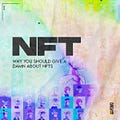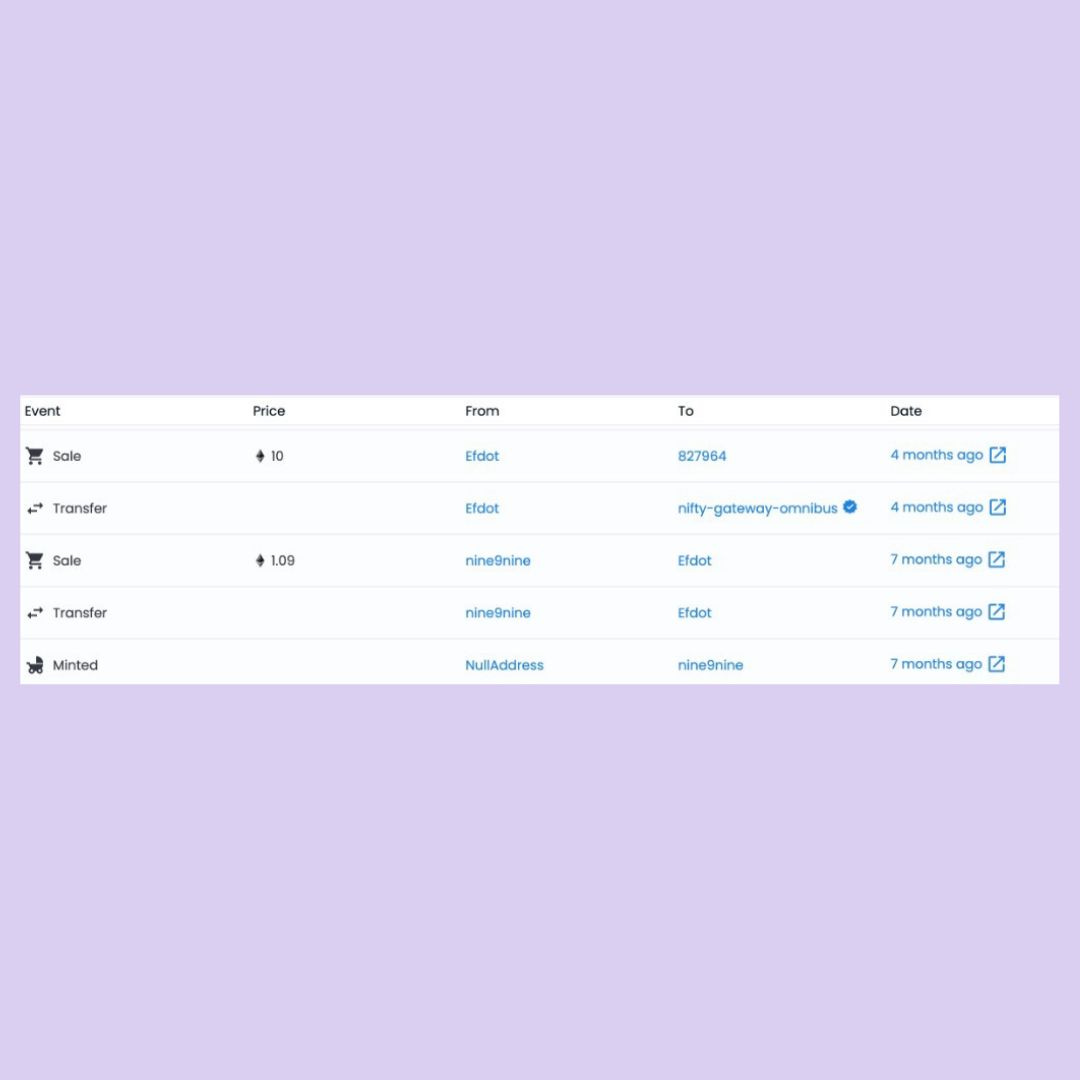#1: Why you should give a damn about NFTs
Behind the apes, punks and droids are a key bit of new tech that could re-arrange ownership and governance.
Look out for our trivia questions at the end of our articles. You might win some cool stuff. 💛
In 2014, digital artist Kevin McCoy and tech entrepreneur Anil Dash paired together and discovered a way creators could own their work and attain financial freedom.
They uploaded a looping artwork created by McCoy’s wife on namecoin, an experimental open-source technology they were building on the blockchain network. They called it “monetized graphics”, and it was the first NFT.
The NFT market, they thought, would help artists earn while also allowing them assert full ownership over their creations.
Imagine yourself, an artist, a musician or poet with a dream of one day generating wealth through your craft. By the time you deduct tax, agency fees, brand marketing fees and more, you’re left with little to survive on. You may even never find a gallery to display your work.
The arrival of NFTs helped to solve that problem for artists; it allowed them to prove unique ownership using technology and, in turn, receive fair rewards for their digital work. After the sale of an NFT, a creator is paid a set fee every time their NFT moves from wallet to wallet on a platform like Opensea.
What exactly is the concept behind NFTs?
NFTs are non-fungible tokens. ‘Non-fungible’ means a thing is unique and can’t be replaced with something else. For instance, if you have a one-of-a-kind trading card, you can’t exchange it for something else; that would be totally different.
So NFTs are unique digital assets that often represent real-world objects like art, music, videos, in-game items and so on. They can be anything digital and each NFT has a unique identifying code.
How do NFTs work?
NFTs hold a value primarily set by the market and demand. Therefore, they can be bought and sold like other physical types of products: art, vinyl tapes, photographs, and more.
Like physical products, NFTs can increase and decrease in value. When NFTs increase in value, it means a lot of people want them and when they decrease in value, it means it's not in high demand.
NFTs are becoming an increasingly popular way to buy and sell digital art. They are stored on the blockchain and are bought and sold online, frequently with cryptocurrency. An NFT creator or seller can transfer value and ownership to a buyer.
Most NFTs are part of the Ethereum blockchain. Ethereum, like bitcoin, is a cryptocurrency—the way you have US dollars and pounds—and its blockchain supports NFTs. There are multiple blockchains like the Ethereum blockchain, Tezos, Solana and Matic, Cardano.
Although Kevin McCoy and Anil Dash created their first NFT to protect artists and artworks, NFTs have come to represent different things: artworks, digital clothing, short stories, poems, access to a club, articles, crowdfund, access to a group and even gaming items.
What makes an NFT an NFT?
NFTs are immutable: Think of the iconic Monalisa painting by Leonardo da Vinci, for instance. It is a one-of-a-kind piece of art. In the same way, once an asset has been minted as an NFT, no one change the design.
NFTs are decentralized: They are stored on a network of computers instead of a single computer, which means they are controlled by a lot of people and not just one person.
NFT details are open to the public: Anyone can see the transaction history of an NFT.
Some of the different types of NFTs
1/1 art: One-of-one NFTs are one of a kind. Only one original exists.
Collectibles: These are part of a collection of NFTs which look alike, but which have unique traits. NFT collections can be any number whether 12, 300 or 12,000.
Play to earn (P2E): You earn these NFTs while playing games. First, you have to buy an NFT to get access to the game. Then you earn tokens, coins, or even NFTs as rewards for winning or getting to certain levels in the P2E games. These rewards can be traded for real money.
Virtual fashion: People who own certain NFTs can gain access to exclusive fashion shows in the metaverse and even in real life. Fashion designers can also create NFTs that give buyers access to unique fashion items.
Domain names: Last year, ENS domains gifted people thousands of dollars for buying their domain names. These domain names end in {.eth} and can be used anywhere, even on Twitter.
Wearables: If you have ever played Subway Surfer, you probably know what a wearable is. They're attires we can use on our digital selves. A wearable can be a really cool headphone, glasses, or this NIKE sneaker. Unlike digital fashion items which you can redeem for the real thing, wearables are only meant for in-game items or digital personas.
Event tickets: An event host may create NFTs to represent tickets for their event. This NFT will then give the buyers access to the event. This BNXN NFT, for instance, gives buyers free access to all Buju shows for the rest of the year. It also gives them access to listening parties and unreleased music by BNXN.
There’s no limit on what you can do with NFTs. Less than a year ago, they were only associated with artwork. Today, people open businesses and take loans with them. A lot will change in the coming years as the technology continues to evolve.
Thanks for reading Facesofweb3! If you didn’t understand anything or need some stuff clarified, simply reply to this mail and we’d follow up with you!💛
Also, you can join our space by 7PM GMT where we’d have a roundtable featuring @thegreatola, a nigerian crypto enthusiast and NFT flipper.
In the next article, we’ll explore some other types of NFTs and how everyone —from creators to traders, can benefit from it.
Please share this newsletter, follow us on social media, and turn on your notifications to stay up to date with the latest information about NFTs and Web3!
Trivia⚡⚡⚡⚡
Test your knowledge
What is an NFT?
Tweet your response at us using the hashtag #TriviawithFOW3. We’ll send the person with the first correct answer a POAP (proof of attendance protocol, more on this later) and guide them in opening their first web3 wallet!




